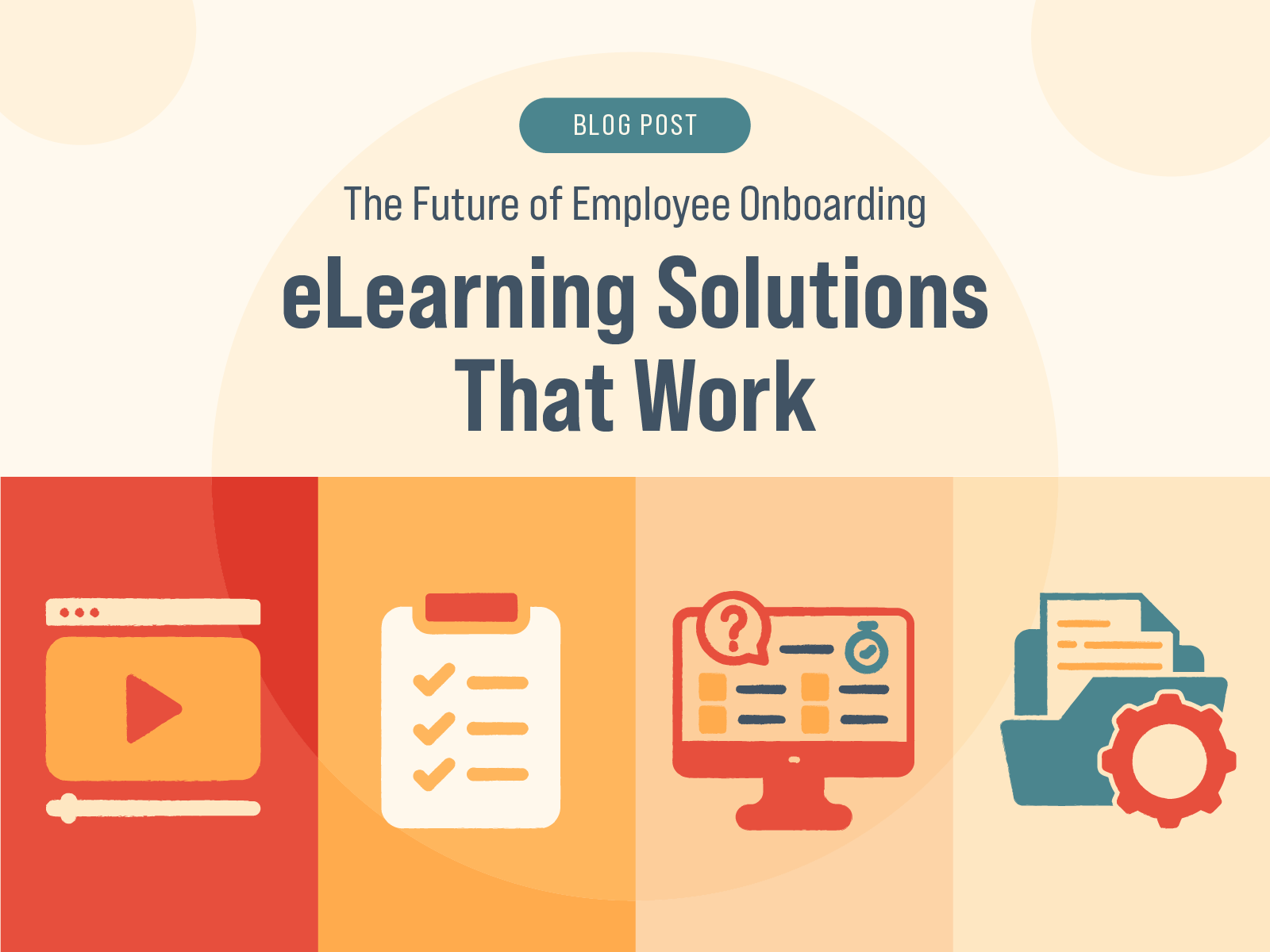12 Best Tips on How to Improve Employee Training with Gamification in 2021-2022
Whether you’re onboarding new employees or training current employees, the training process can be time-consuming and laborious for all parties involved. Putting together effective training materials and courses can utilize many company resources, however, cutting corners will only result in poor results.
This is where gamification of training content comes into play, as it offers a unique spin on traditional learning methods.
What Is Gamification in Training?
Gamification in training occurs when gaming designs and concepts are integrated into the eLearning training sessions. As a result, the material becomes significantly more engaging and entertaining for your employees as they navigate new lesson plans. Cultivate a more rewarding and interactive learning experience through gamification in training.
Benefits of Gamification in Employees Training
Gamification in online training comes with many benefits.
1. Employee Engagement
One of the biggest benefits of gamification is how much more engaged with the material that your employees will be. This tool produces variation in your brain’s behavior through different brain chemistry.
As your employees navigate their eLearning courses, they will feel a sense of accomplishment as they gain points and become top scorers. Regardless of the course material, gamification brings a competitive and lighthearted aspect to learning.
2. Getting Feedback
Traditional learning methods mean you’ll only know how well you engaged with the content at the end. With gamification in training, your employees will receive timely feedback as they navigate each course. As the feedback comes in, employees can better retain information and make adjustments to material that they have already seen.
Learning while you progress through each course makes for a better overall learning experience.
3. Motivation and Encouragement

The sheer motivation and encouragement that comes with gamification in training is another huge benefit. It's in basic human nature to want to win and surpass other competitors who are taking the same courses as you.
Seemingly “boring” topics and dense subject matters are instantly more engaging with gamification aspects. A little friendly competition amongst your employees can motivate them to get through these important topics and perform at their best.
4. Ideal for All Types of Training and Courses
Different employees will naturally gravitate toward different learning types and styles. Regardless of how your employees like to learn and interact with new learning content, gamification is a valuable training tool.
Plus, when you are onboarding new employees, you can utilize gamification to teach them valuable information to set them up for success at your company and beyond.
5. Skill Development & Improvement
Providing your employees with ample opportunities to learn, self-improve and develop is another major benefit of gamification in training. Whether they are learning new skills, want to improve upon their existing skills or become a team leader, they will be appreciative of learning in such an engaging environment.
Over time, skills that once seemed impossible will become second nature, giving your employees the confidence they need to thrive.
6. Changes Habits
There are many habits that we all naturally carry without recognition. The same can be said for how we learn new information. Gamification training can help call out these habits through techniques such as repeated retrieval and space recognition.
For example, learning sessions may be broken into four different sections within a week off between sessions. This is a proven format to create more knowledge retention and promotes the importance of self-reflection.
12 Gamification Tactics for Training Courses
The mechanics of gamification lend themselves to an effective learning environment. Here are 12 gamification ideas for training.
1. Immersion
Gamification content is only as strong as its delivery. Always be aware of the level of immersion in gamification and employee training. For example, let’s say there’s a slide that demonstrates how to assemble a sandwich for a particular company. Instead of using a multiple-choice question, consider having the user drag and drop the ingredients in the right order. Immersion can cement this type of information.
2. Think Creatively
Rather than including language such as “click next to continue” in immersion situations, think about changing the language to make it more appealing. For example, tying back to the sandwich example above, you can prompt users to continue by writing something such as “another order came in, select the order and assemble the next menu item.”
Another way to shift the focus is by using highlights or arrows that grab the learner’s attention.
3. Scenarios
Gamification and employee training lend themselves well to scenario slides. These slides must be scripted properly to become one of the most effective training tools of the course. They put the individual in a role-play scenario that is realistic and practical. It makes the material that much more engaging and memorable.
4. Personalization

The more personalized the learning experience, the more effective it will be. Personalization is one of the simplest and easiest gamification tactics for training. Even using the individual’s name throughout the course or allowing them to select the avatar of their choice can make lessons that much more relatable.
5. Matching & Sequence
Prompting users to remember the terms or steps can help them understand the relationship between items or processes. For example, you may have match and order slides that the learner needs to complete that reflect the critical thinking necessary to absorb the information. Although seemingly simple, matching and sequence exercises can put your employees’ knowledge to the test.
6. Hotspot
When putting together training through gamification, make sure to include assessment slides that include hotspots; these require the user to apply their knowledge through computer screen simulations. For example, the user may have to open a particular computer program that forces them to remember the program’s icon and perform specific tasks. These assessments can vary in difficulty.
7. Loss Aversion/Consequences
It’s human nature to avoid loss as it's a great motivator. Implement the same approach in gamification for corporate training. Whether the learner loses points, progress, time, or achievements, including a potential setback can motivate your employees to take their time learning and absorbing the information. This risk and reward dynamic ensure focus and engagement throughout the course.
8. Progress/Feedback
Let users know how they are doing by giving them progress updates and real-time feedback. This gives them the ability to measure how well they are doing and what information needs additional learning. Providing progress and feedback will also add to loss aversion throughout the course.
9. Score
Implementing some sort of scoring system can make your eLearning course that much more exciting. Scoring is one of the most popular aspects of gamification in online training and helps users reach their goals. It also triggers a fear that many people have when tasked to complete a realistic or attainable goal.
10. Branching Choices
Branching choices refer to user selection in terms of a specific scenario. For example, if the learner selects Option A versus Option B, the scenario will change accordingly. This can help drive the narrative and make learning that much more memorable. Branching choices is another example of personalization throughout the learning process.
11. Progression
We all have a deep fear of missing out and want to see tasks through to completion. Consider implementing progression trackers that show the percentage of the course that has been completed. As the percentage gets higher, the user will feel more rewarded and motivated to continue the course.
12. Boss Battles
Keep employees on their toes with boss battles. It requires all aspects of training and critical thinking by providing the employee with a difficult situation. For example, it may be an extremely large order that is difficult to memorize, learning to deal with an upset customer, or fixing a broken piece of machinery.
Consider letting employees know when they score amongst the top performers in the company.
Conclusion
Training through gamification adds fun and dynamic spin to traditional eLearning classes. For additional information on gamification, please reach out to our team at Allegro Media Design. We’re happy to provide you with a free quote!
More Articles


Gamification in eLearning: Why It Works and How to Implement It

The Future of Employee Onboarding: eLearning Solutions That Work

What is SCORM and What Does it Matter

Accessibility in eLearning: Why It’s Essential and How to Achieve It

Microlearning: Bite-Sized Training for Big Results

Soft Skills Training Through eLearning: Building Better Leaders

How to Write Learning Objectives for eLearning Courses

When to Outsource Your eLearning Development (and How to Choose the Right Partner)

Employee Engagement in 2025: How eLearning Can Help

Training for a Multigenerational Workforce: Meeting Everyone’s Needs

The Future of eLearning: 4 Trends Shaping the Industry

How To Find the Right eLearning Developer

What Makes eLearning Effective?

Transform Your eLearning with the Magic of Animation

How to Use Audio to Enhance eLearning

Boost Learning Efficiency with Microlearning

Give Your Dated eLearning a Fresh Facelift

The Process of eLearning Part 5: The Implementation Phase

The Process of eLearning Part 4: The Development Phase

The Process of eLearning Part 3: The Design Phase

The Process of eLearning Part 2: The Analysis Phase

The Process of eLearning Part 1

Empower Your Workforce with Self-Paced Training

Elevate Your Training with Exceptional Visual Design

Taking the Confusion Out of SCORM

Embrace Efficiency: The Power of Outsourcing Your eLearning Production

Mastering eLearning: Elevating Corporate Training Through Scenario-Based Learning

Converting ILT to vILT: Embrace the Virtual Shift

Spice Up Your Boring Corporate Training With Animated Videos Copy

From Concept to Clicks: The Crucial Role of eLearning Developers

Lost in Translation: Mastering Multilingual eLearning

Training Crossroads: ILT or eLearning – What's Your Strategy?

How to Transform Boring Compliance Training

Last-Minute Crunch? Allegro Media Delivers Rapid eLearning Solutions Just-In-Time!

The Art of Chunking (or How to Eat a Whale)

Zen & The Art of eLearning Maintenance: Finding Harmony with Allegro Media Design

How to leverage ChatGPT for eLearning Applications

What Should I Look for When Hiring an eLearning Vendor?

Unveiling the Future of eLearning: Trends to Watch in 2024

Subject Matter Experts: Be Proud! Allegro loves you just how you are!

What in the World is an LMS?

Enhancing eLearning Engagement: The Power of Scenario-Based Interaction with Stylized 3D Motion Images

Enhancing eLearning with DALL-e: Adding Visual Reinforcement for Engaging Corporate Training

Choosing the Right Authoring Tool for Your eLearning Course

High Quality Audio is ESSENTIAL in Modern eLearning

What in the World is SCORM?

A Complete Guide to Leadership Training and Development

Benefits of Customer Service eLearning Training

14 Tips To Effectively Use Audio for eLearning Courses

10 Instructional Design Tips for Effective eLearning

Why You Should Use eLearning For Product Training

Benefits of Voice Overs for Your Business

How to Create Great eLearning Content: 9 Tips

Video Marketing for Business: 10 Benefits of Promotional Videos

Gamification in the Workplace: Why and How to Use It

5 Best Practices for Training Remote Employees

How to Avoid eLearning Burnout and Fatigue

What Is Customer eLearning Training and Why Do You Need it?

8 eLearning Sales Training Best Practices: Tips & Use Cases

How to Effectively Use Videos in eLearning

Best Practices for Remote Employees Onboarding with eLearning

Why You Should Invest in Corporate eLearning?

How Can eLearning Reduce Employee Burnout?

How to Motivate Employees to Participate in eLearning Training: 9 Tips

eLearning Trends and Predictions: 2022 Forecast

7 Reasons to Outsource Your eLearning Course Development
%20to%20Virtual%20Instructor-Led%20Training%20(VILT).jpg)
How to Convert Instructor-Led Training (ILT) to Virtual Instructor-Led Training (VILT)

What Is Compliance Training and Why Is It Important for Your Business?
%20vs.%20eLearning.jpg)
Instructor-Led Training (ILT) vs. eLearning: Which Should I Choose?

The Difference Between An Instructional Designer And An eLearning Developer
















